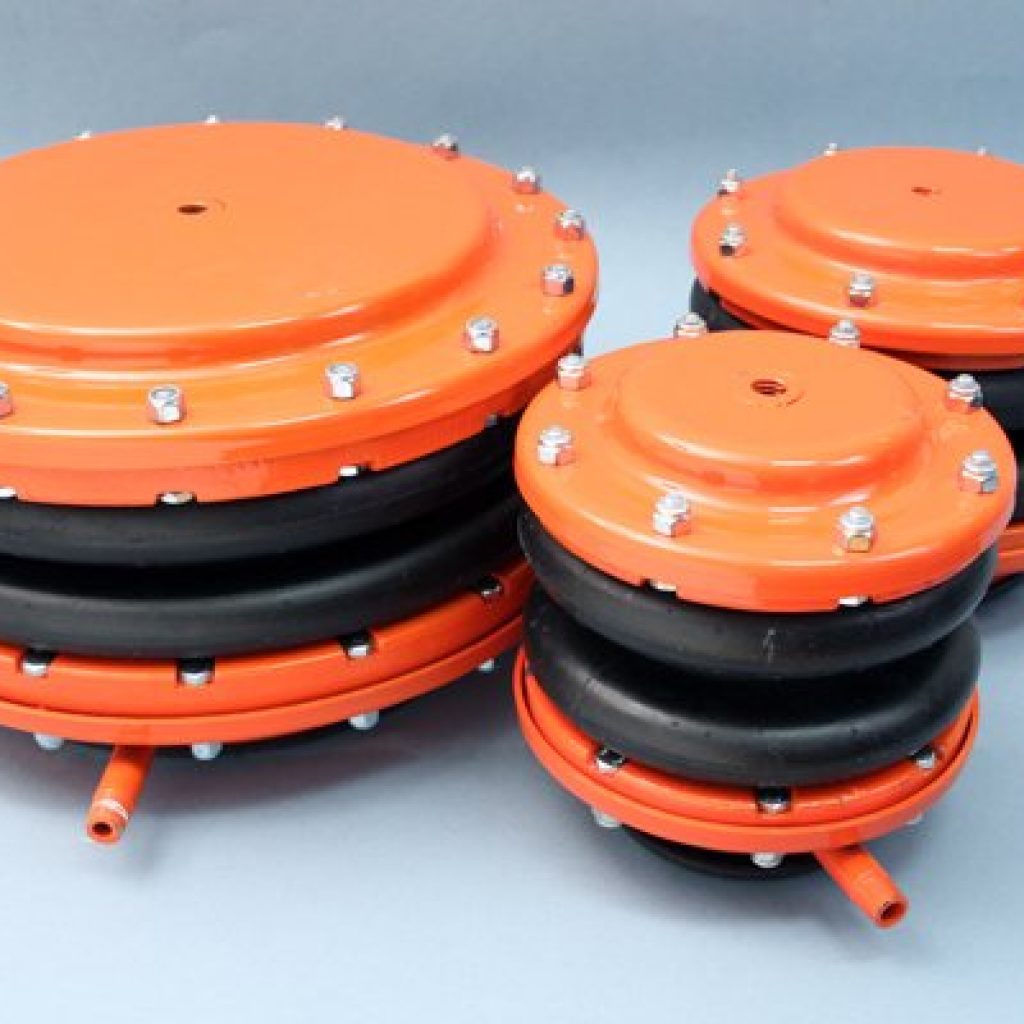Air Springs System for Electron Microscopy Suite, Cardiff Innovation Campus

Cardiff Innovation Campus, Wales
Sensitive scientific equipment can require high levels of vibration isolation. When construction company Bouygues received a specification requiring a high level of isolation for a large electron microscope at the Cardiff Innovation Campus, the conventional methods of isolating equipment were insufficient. Bouygues turned to vibration control specialist Mason UK, who designed and installed a bespoke system of air springs to isolate the electron microscope from vibration and meet the exacting requirements of the project specification.
The Cardiff Innovation Campus is an architectural triumph. Among other things, the £300 million state-of-the-art facility is home to the UK’s first sculpted, slanting ‘oculus’ staircase. What was once a disused railway yard has been converted into cutting edge facilities, including world leading scientific research establishments and what is described as the world’s first social science research park.
The complex is also home to a large electron microscope. Although the location may be ideal from an accessibility point of view, it is problematic for the operation of an electron microscope. Imaging and analysis at the atomic level means that any external interference that causes a deviation greater than the dimensions of the atom can be a major problem. The new electron microscopy facility is located close to a busy road and just 75 metres from Cathays trainline, both a passenger and freight line in constant use 24 hours a day. Early site surveys demonstrated that the vibration caused by passing trains would interfere with the proper functioning of the equipment and would be a limiting factor in the performance of the microscope unless the correct vibration isolation methods were put in place. This would significantly affect the commercial viability of the facility.
The acoustic consultant, Colin Gordon Associates, therefore took the correct approach in designing an especially onerous specification to ensure the proper functioning of the ThermoFisher electron microscope. The unique challenges of this project would require considerable engineering. This involved the construction of an exceptionally high mass and stiff foundation in addition to exacting passive vibration isolation measures.
When conventional methods won’t work
The manufacturer of the equipment had determined the level of vibration that would interfere with the correct functioning of the electron microscope. Anything above VC-E level vibration was not permissible. VC-E level is regarded as an extremely challenging criterion to achieve. VC-F and VC-G levels are appropriate for extremely quiet research spaces, but as these levels are often not possible to achieve in practice they are not recommended for use as a design criterion, only for evaluation. Bouygues began discussion with Mason UK as early as 2017 on how best to achieve this level of isolation.
Spring mounts are often specified to isolate mechanical and electrical equipment or protect sensitive instrumentation, however a higher performance isolation system would be required here.
Isolation with air springs
Air springs are specified in projects requiring very high levels of vibration isolation. Each air spring is essentially a rubber bellows, pressurised with a gas, such as nitrogen. Air springs are self-levelling and have very little resonant response, therefore providing a high level of stability and higher levels of isolation than can be provided by rubber or spring isolators. Air springs typically achieve natural frequencies of sub 2Hz, but it is possible for well-engineered systems to go even lower.
Air springs are often used to isolate sensitive medical equipment, like MRI scanners, or high precision imaging equipment like electron microscopes. However, there are very few vibration control specialists who have the products, technology and expertise for projects that require this level of isolation. Most companies in this particular niche of engineering simply do not provide air springs as an option.
Bouygues therefore chose Mason UK. We proposed a bespoke system of air springs to meet the level of isolation determined in the specification. The electron microscope would be mounted on a large concrete block, or inertia base as it is technically known. This, in turn, would be separated from the ground using a system of air springs.
Working within constraints
Bouygues needed a partner that could work closely with them throughout the process, going back and forth with the acoustic consultant, to ensure the specification was met. This would require many letters of qualification to get the design accepted with sufficient confidence, so experience of working on complex projects like these was important.
This process was more difficult because of some of the unique constraints of this project. For example, the system of air springs required a huge pit in the floor, as the air springs are supported on top of columns for stability reasons. However, the system also had to work architecturally within the building, and so the maximum possible pit depth was a constraint that had to be worked around. Mason UK worked closely with Bouygues and the acoustic consultant to determine the optimal solution in terms of the pit size, helping agree a depth that would provide the necessary vibration isolation, but still work from an architectural point of view.
Another design constraint arose from the need to shield the electron microscope from electromagnetic sources. This necessitated integrating the floating block with the continuous electromagnetic shielding lining the entire room. Stainless steel was preferred where possible, as this has a reduced magnetic signature compared to alternative materials, while extra effort was taken to ensure that where anchorage into the structure was necessary, there was no risk of generating any pathway for electrical conductivity.
Isolation in action
The electron microscope now resides on top of a large inertia base which can be raised by the system of air springs. The block itself weighs approximately 10,500 kg, with the additional weight of the microscope resulting in a total mass of 14,000 kg.
When the system is actuated via a remote control box, the air springs are pressurised and the inertia base and microscope is lifted from its supports. This action cuts out any transmission path for sources of vibration, meaning any vibration has to pass through the air springs. The low resonant response of the air springs ensures the equipment can be safely operated without any impact from sources of vibration.
Although the specification had required VC-E levels of isolation, the scientists who would be using the microscope were optimistically hoping for VC-G levels. Astonishingly, subsequent testing demonstrated that Mason’s air springs not only surpassed the VC-E levels specified by the manufacturer, but in part even surpassed the VC-G levels the scientists were aiming for.
Reflecting on this impressive result, Dr. Thomas Davies, Experimental Officer with the School of Chemistry at Cardiff University, explained that ‘‘the final design exceeded expectations and delivered a measured level of VC-H/I. After a smooth installation, Mason continued to work with us to fine-tune the properties of the block to minimise cross-talk and maximise performance, and this has resulted in a world-class, state-of-the-art ultra-quiet electron microscopy suite.’’
‘‘Mason UK proved to be a very knowledge and competent specialist,’’ recalled Ashley May, Senior Design Manager with Bouygues UK. ‘‘They delivered excellent advice, design, installation and post installation support on this project and went the extra mile with assistance, even after the completion of the contract.’’ Following the successful completion of the air springs system – including the positive reports from the scientists operating the equipment – Mason UK have been invited to tender for further works on this vibration sensitive project.
Please see additional installation photos in the following gallery.







